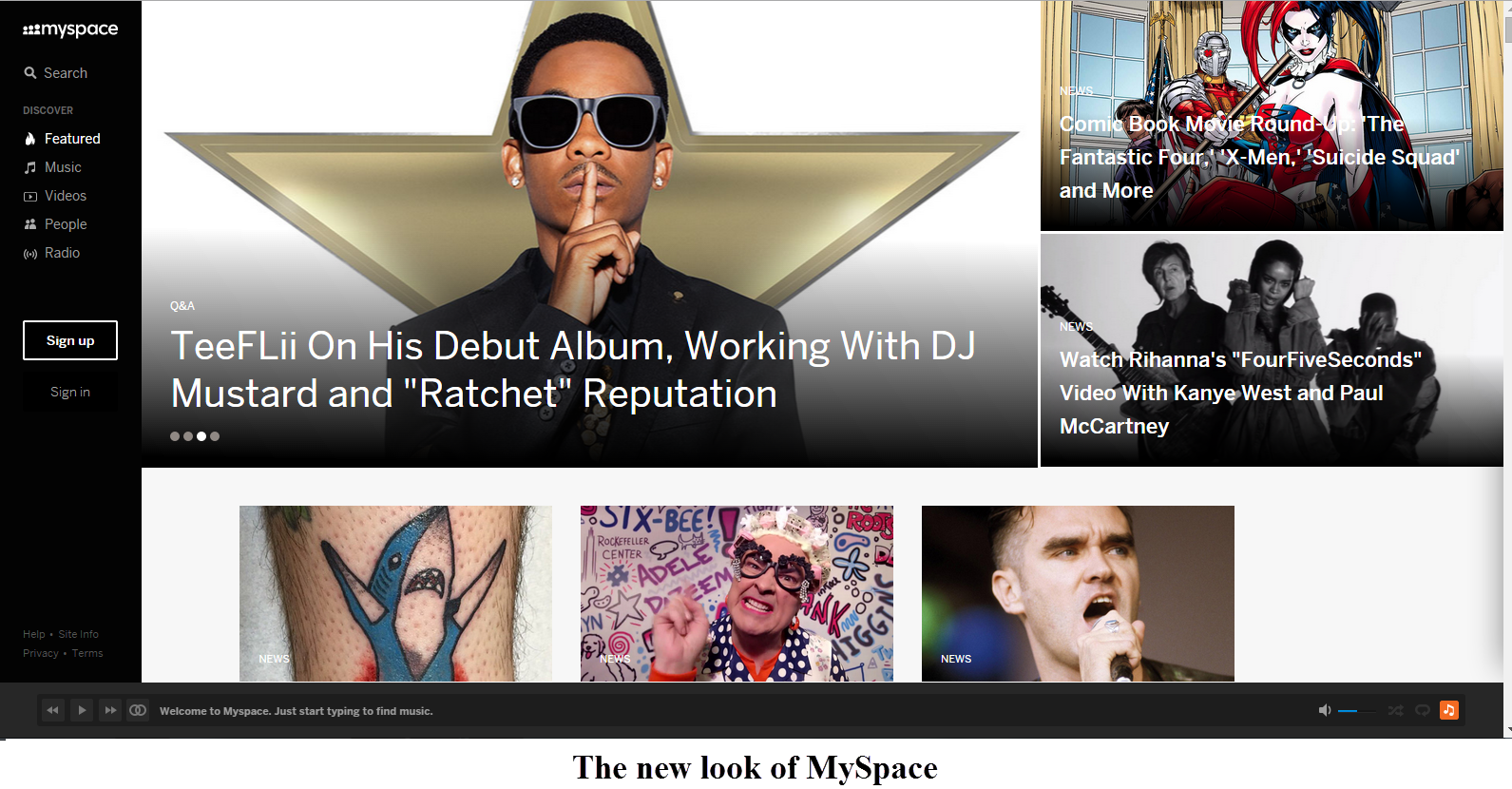4 Reasons Building Your Audience Builds Your Business

Targeting an audience can often feel like finding a needle in a haystack—or being a Republican in Portland.
It takes work. A lot of work. But the fact is, if you aren’t catering to and growing a specific market, you are losing potential business.
If you have an established company, you probably already know that you need to identify a target market for your products or services—and if you’re profitable, then you’ve probably already done the research legwork.
However, not everyone takes the time to consider the whys behind the whats. Identifying a target market alone will not increase the effectiveness of your marketing. Here are four reasons building your audience builds your business.
1. Focused Vision
When you have limited marketing resources, you can’t afford a one-size-fits-all approach to your outreach efforts. Casting a wide marketing net might cover a lot of people, but it won’t necessarily bring you the kind of leads that convert.
That is why it is important to narrow your focus on a target audience and direct most of your resources towards them. Once you do this, your business will have a clear vision that is defined by specific audience-centric goals and parameters.
For example, in 2013, when Apple released the iPhone 5C, many were surprised by the high price tag. Investors had hoped that the traditionally premium-focused brand would branch out into the broader market share with a less expensive product. As Max Wolff, chief economist and strategist at ZT Wealth, said,
“Eventually, they have to choose market share or margin. And $550 [for the iPhone 5C] is not how you maximize your market share.”
However, part of Apple’s vision and brand is its status as a premium product. To preserve that image, Apple charges premium prices—because people aren’t just buying a smartphone, they’re buying a lifestyle.
With news of Apple’s record $18 billion in profits last quarter—the largest quarterly profit in corporate history—it appears that sticking with their primary market margin and original vision has paid off.
The takeaway? A target audience is fundamental to building and focusing company vision.
Apple decided to stick with their original strategy and brand to stay in line with their audience. When you come to these crossroads, understanding who your audience is and what your goals for the future are go hand in hand.
2. Prioritized Investments
Since you don’t have unlimited resources to invest in your marketing campaigns, by necessity you will have to prioritize how you will spend your budget. So far, so obvious. But when you have a target audience and the aforementioned focused vision, prioritizing becomes much easier.
Based on your target audience’s persona(s), you can evaluate which marketing channels will resonate most effectively with them–and direct your investments accordingly. This includes social media, search engine marketing, content marketing, and traditional advertising channels.
Consider Skytap, a B2B self-service provider of cloud automation solutions. Their marketing team knew that the only way to get successful results was through a deep understanding of their audience. So, they researched their markets and created multiple audience personas to tailor their content to the various groups of people and businesses who use their services.
Because they had narrowed their audiences so specifically, their content investments were much more effective.
“It would be really easy for us to do a general newsletter that had everything from development and testing, to virtual training and software demos, but that’s not very targeted. You’re going to lose readers based on their level of interest,” said Nate Odell, Skytap’s Director of Marketing.
Instead, all the content on their website is tailored for optimal user experience—even down to their web copy.
The blog is organized into categories, so readers can search for the topics relevant to them. Case studies and testimonials on the site feature success stories from satisfied customers in each target segment. And the web copy speaks directly to target audience roles (such as developers, test engineers and QA managers).
The result?
A 124% increase in leads from all channels (both online and offline) within 18 months. All from investing in their content marketing campaign with an eye single to their audiences.
3. Customers Come First
According to the IDC, 33% of all unsuccessful deals could have been won if the seller had been better informed and had acted more client-oriented.
In other words, getting to know (and more importantly, serving) your audience matters.
Too often businesses forget about the purpose behind their marketing materials—their audience. With every piece of content, and every call to action, make sure you’re putting the customer first.
Ask yourself:
- Does this webinar provide real value to my subscribers?
- Is our landing page easy to navigate and can customers find the information they’re looking for?
- Is the company blog a resource for our consumers, or a billboard for our products?
Businesses that put the needs of the consumer first will see greater customer growth and retention.
Nowhere is this truer than in content marketing. Think about it. The Internet is a boiling pot of content—and most of it is free. But why would businesses give information away that they invested real time and money in?
The answer is trust. As Brian Gardener, founder of StudioPress explains,
“When you dole out information (free of charge), it helps establish you as a credible source. More importantly, it creates a trust factor (between buyer and seller).” Tweet This
In other words, the more you invest in your community, the more they will give back—in the form of loyalty and (if you’re doing it right) conversions.
This means higher profit margins and lower sales costs. In fact, according to the authors of Leading on the Edge of Chaos, reducing customer turnover (i.e. increasing loyalty) by only five percent can increase your profitability by 25% to 125%.
4. Secured Niche
If you base your vision, practices, and marketing strategies on your target audience, over time this community will shape your business within its own niche or market segment. This is because when you aren’t pandering to this vague notion of “everyone,” you suddenly have a lot more power to invest in the people that matter most—and that naturally affects the way you run your business and move it forward.
Entrepreneur explained that companies who focus on a niche market have “a deep understanding of their customers and their customers’ needs and the ability to stay engaged with those customers.”
As you listen to your consumers—and respond—your products and services will evolve to fit their specific needs. This results in products that are more valuable to your customers, customers who are more valuable to you, and a piece of the market to call your own.
For example, consider MySpace. You remember MySpace, right? The popular social networking site in the pre-Facebook era. Well, once Facebook hit the scene, MySpace took a major hit in its target audience base. Gone were the days of ranking your friends as thousands emigrated to the new social network, leaving the former Big Kid on the Block scrambling for a foothold.
That might have been the end for MySpace, but they regrouped and rebranded. How? By focusing on a narrower, niche audience—musicians.

With a new look and a new focus, MySpace looks set up for a bright musical future. All from focusing on their niche audience.
Bringing it all together
Building an audience takes time and effort (and a lot of both). But it’s worth it. Your products will be better, your customers will be happier, and your business will be more profitable.
Jeffrey Rohrs, author of “Audience: Marketing in the Age of Subscribers, Fans, and Followers,” put it this way:
“The companies who realize audiences are assets and shift their focus to the audience will win.” Tweet This
Build your brand for your audience and around your audience to secure your niche and retain your customers. At the end of the day, your company and your brand is nothing without the people it is built on.
If you haven’t made your audience a priority, start today. You really can’t afford not to.
Tell me…
How has focusing on your audience helped your business? What things are you doing to build your business around them?

This is the importance of service targeting in the long tail range. Companies too often go after everyone they can and fail miserable because they lack strategy or direction. Great article.
Thank you! Spot on observation. There’s a lot of power in niche marketing and working to serve a narrowed target. It’s definitely more efficient!
Great post Brittney! I find it interesting how building your audience has changed as the Internet has taken front stage. With tv or radio commercials there was only so much a business could do to target specific audiences. With the Internet there are several ways to narrow down your audience to the very keyword users type in search engines, based on what other sites or pages the viewer has seen or visited, Facebook friends, etc. With these changes there is a need for more specific content for the specific audience.
Thank you!
That’s a great point. It’s amazing how much more potential there is for companies today to reach their customers–and in such personal and tailored ways. Makes for a lot of exciting and creative opportunities for the advertising and content marketing fields to collaborate!
Unfortunately many business owners just want to be known as a “dentist in Lehi” or a “plumber in Salt lake.” They don’t think about the smaller fractions of their audience. In all reality these smaller fractions have a much greater intent to purchase your services, focusing there will get you the quickest return on any marketing investment. Cater your content and website accordingly!
Very, very well said!
Great article with some great points. Not having a focus is like shooting in the dark
Yep, especially because not only will you not hit your target, but you could also even do some damage that will be tough to repair (remarket/rebrand).
Agreed!